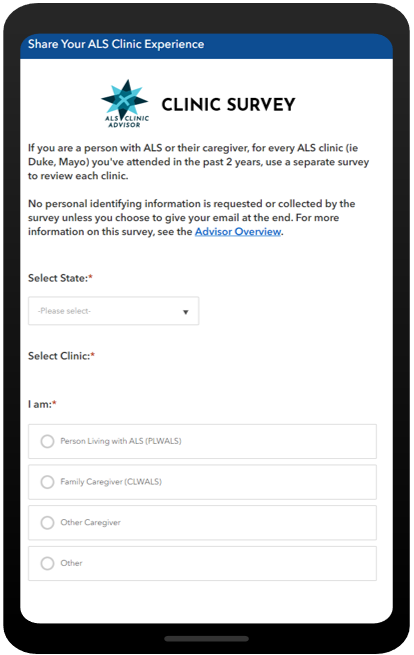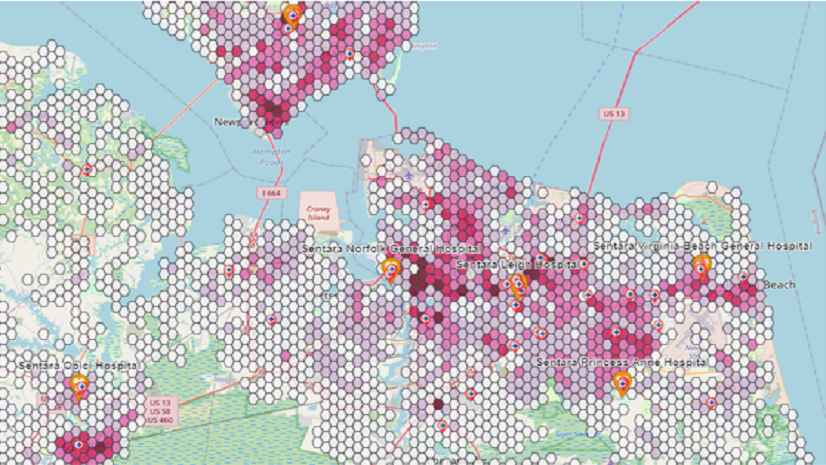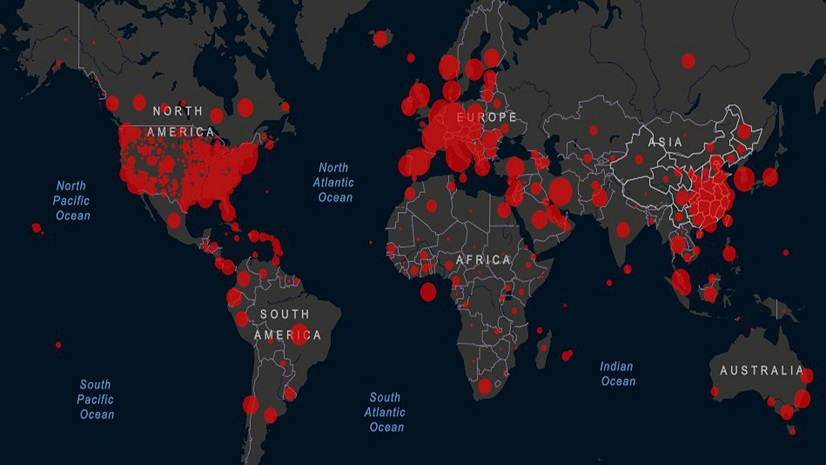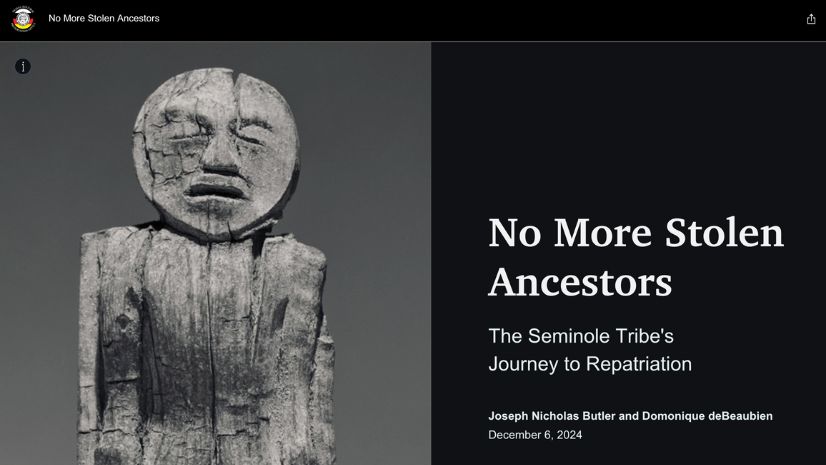Quality Improvement: A Crucial Focus for ALS Clinics
Quality improvement (QI) in healthcare ensures that clinics consistently deliver better patient care, identify gaps, and implement actionable solutions. For ALS (Amyotrophic Lateral Sclerosis) clinics, QI is particularly important. Also known as Motor Neuron Disease (MND), this progressive condition is a neurodegenerative disorder that affects nerve cells in the brain and spinal cord, leading to loss of muscle control and thereby affecting one’s ability to move, eat, speak, and breathe. And for some, ALS / MND can impact mental acuity as well. Clinics caring for people with this disease must be multi-disciplinary and include a neurologist, respiratory, occupational and physical therapists, dietitian, mental health services, and a care manager to coordinate the team. With no known cure, timely access to high-quality care can profoundly impact the quality of life for patients and their families.
GIS (Geographic Information System) has emerged as a helpful and easy-to-configure tool in advancing QI efforts for ALS / MND care. The ALS Clinic Advisor was developed by GeoALS, a nonprofit organization that uses GIS for care, research, and advocacy. With input from people living with ALS / MND, caregivers, and advocates, the ALS Clinic Advisor provides critical insights into clinic performance, accessibility, and opportunities for improvement. This blog explores how GIS tools like Survey123, ArcGIS Dashboards, and ArcGIS Hub are empowering patients, caregivers, and healthcare organizations in support of optimal clinical care.
Mapping Insights: Where Care Exists, Where It Is Needed
Location matters when it comes to healthcare. The ALS Clinic Advisor leverages GIS to map clinics, highlighting where care is available and identifying underserved areas. This effort went global two years ago in collaboration with the International Alliance. See ALS / MND clinics world wide on the International Alliance website.

This spatial approach also allows ALS patients and caregivers to locate clinics easily and make informed decisions about their care journey.

Despite massive efforts to include all ALS / MND clinics, things are always changing and it’s possible that some clinics providing specialty care recently opened or are simply missing from the database. For that reason, GIS tools make adding a clinic easy for anyone who wishes to do so. Learn more about locating and adding clinics in this short video [youtu.be]. Understanding where clinics are available is critical, but this alone is not enough—understanding patient experiences at these clinics is vital to drive meaningful quality improvements.
Survey123: Collecting Patient Experience to Improve Care
At the heart of the ALS Clinic Advisor is the clinic survey, designed to capture the real experiences of ALS patients and caregivers. Built using ArcGIS Survey123, the survey focuses on seven critical areas of clinic performance:
- Neurology
- Therapies & Services
- Clinical Trials & Research
- Administration
- Equipment Loan Program
- Communication
- Facilities
The survey is intentionally streamlined, taking just 8-12 minutes to complete, and is even eye gaze-friendly—a critical consideration for those with advanced ALS. To ensure quality, every submission is reviewed before being made available on the Advisor Dashboard. This rigorous process ensures the data is actionable and constructive.

ArcGIS Dashboards: Turning Data into Actionable Insights
The Advisor Dashboard summarizes survey responses, providing ALS care teams with insights that can improve clinic operations and patient outcomes. Users can filter data by clinic, neurologist, and survey category to:
- Identify areas where clinics excel and define best practices.
- Pinpoint issues that need immediate attention, such as communication gaps or facility challenges.
- Highlight opportunities to improve clinical trial education and participation.
For example, survey responses to date indicate that while the majority of neurologists are praised for being empathetic listeners, less than 50% of clinics proactively educate patients about clinical trials or help them enroll—an immediate opportunity to strengthen care and offer hope (learn more here).

Another key feature is that clinics can respond to people’s comments about care experiences if they choose. This enables clinics to provide greater insights about the issues reported or correct misinformation about services available within the clinic.
Supporting Care Managers and the ALS Community
Care managers, who advocate for ALS patients and support clinic operations, are key users of the ALS Clinic Advisor. While many challenges faced by clinics are known, the survey data provides care managers with the evidence needed to advocate for resources and drive changes. The value is twofold: patients receive better care, and clinics improve their chances for certification and funding.
Importantly, the ALS Clinic Advisor can become a regular part of clinic workflows. Integrating the survey into clinic days or post-visit routines can seamlessly gather insights without creating additional burdens for staff.
ArcGIS Hub: A Centralized Resource for ALS Care and Research
The ALS Clinic Advisor is part of the larger ALS Geospatial Hub, an online platform powered by ArcGIS. The Hub serves as a centralized resource for ALS patients, caregivers, and healthcare professionals, offering tools to:
- Locate and evaluate clinics
- Accelerate ALS research
- Educate the public about their Legislators support on ALS policies and legislation
Through the Hub, GIS technology fosters collaboration, improves transparency, and empowers the ALS community with actionable knowledge.
The Impact So Far: Survey Results by the Numbers
To date, the ALS Clinic Advisor has collected 890 completed surveys across 187 clinics, covering approximately 76% of all U.S.-based clinics. This remarkable response demonstrates the ALS community’s commitment to improving care. Importantly, 97% of survey respondents recommend the survey, indicating its value and usability.
While this is great, more input is needed. The goal is to collect an average of 10 surveys per clinic. Why? Because greater participation ensures more reliable insights, enabling clinics to confidently address patient needs and enhance care delivery.
Call to Action
The ALS Clinic Advisor is more than a tool—it is a movement to improve care, empower patients, and inspire clinics to deliver their very best. To achieve this, we need your help:
If you are living with ALS or caring for someone who is, complete the Clinic Advisor survey to share your experience and help clinics improve. And if it’s been more than a year since you previously completed the survey, please fill it out again to keep your clinic experience up to date.
For healthcare organizations, consider adopting GIS tools like Survey123 and ArcGIS Dashboards to collect patient data, analyze results, and drive quality improvements for your general and specialty clinics.
Learn more about the ALS Clinic Advisor here.
Together, we can map a path to better care, stronger clinics, and brighter outcomes for the ALS community and healthcare overall.
Learn more about my co-author, Pat Dolan
Pat Dolan is a GIS professional with over 30 years of experience applying geospatial technology to solve business problems. In 2016, he was diagnosed with Amyotrophic lateral sclerosis (ALS). Today, Pat is no longer able to move, eat, speak, or breathe on his own. Fortunately, he is able to continue his GIS career with his eye gazing device that tracks his eye movements to operate his computer and provides communication using a synthetic voice.

After his diagnosis, he wanted to apply his GIS skills to advance the science of ALS. In 2022, with the help of his friends at Esri, Pat launched the ALS Geospatial Hub, which takes advantage of geographic information to discover patterns and relationships that can improve care, accelerate research, and advocate for the ALS community.
That same year, Pat and team released the ALS Clinic Advisor, which allows the ALS community to locate, rate, review, and add clinics worldwide. Pat partnered with the ALS Association, Veterans Administration, Muscular Dystrophy Association, International Alliance ALS / MND Associations, and the World Health Organization to develop the first ALS clinic spatial database, which powers the Advisor.
In 2024, Pat and his wife, Mara, formed a nonprofit called GeoALS [geoals.org] whose mission is to advance the science of ALS through GIS, which is done by providing a geospatial platform to improve care, accelerate research, and educate the public on ALS issues. Dr. Geraghty serves on the board of directors for GeoALS.
Pat is a member of the Team Gleason’s Access and Innovation Committee [teamgleason.org] and a member of I Am ALS Legislative Affairs Team. [iamals.org] And has partnered with the CDC National ALS Registry [cdc.gov] to study the place history of ALS patients.
Follow Pat Dolan on LinkedIn.




